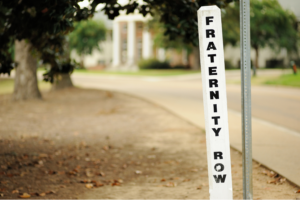The place of race in college admissions has been in the news a lot recently, with the Supreme Court reviewing affirmative action. While we wrote an article on the potential results of that, we thought it good to write another article exploring another factor which can impact admissions, one which does not get nearly as much attention: your gender.
An applicant’s gender is considered when weighing applications. This sounds confusing, and that’s because admissions officers need to balance numerous competing, often contradictory, priorities. In this article, we’ll examine how gender is considered in admissions and how this can impact your own college application process. Let’s get started!
The Collegiate Gender Gap
For much of its history, higher education was a male dominated field, with some colleges not even allowing women to enroll for large portions of their history. This led to the rise of women’s colleges, but the number of women applying to and enrolling in colleges increased significantly after the civil rights era. In 1987, for the first time, there were more female than male undergraduates in the United States. The gap has only grown since then.
Across the board, at all schools and levels of higher education, more women apply then men. Often, especially at the highest levels of competition, these women are more qualified academically and have better credentials than their male counterparts. This is not true on an individual basis to be sure; but when examining populations of applicants, the trend is clear.
This is reflected in overall college enrollment rates. Currently, there are three women in college for every two men. In percentages, that means approximately 60% of the total collegiate population is female. This is true for the population of colleges as a whole, top schools, however, work hard to keep their gender ratio at around 50-50, as they believe this is important for their campus culture.
What This Means for Admissions
This application gap creates a quandary for admissions officers. On the one hand, they want to admit a class of the most qualified students possible, with the best grades, highest test scores, and most impressive extracurriculars. On the other, they want to ensure a degree of diversity in their class, to expose students to different worldviews and backgrounds.
This pursuit of diversity means trying to balance the ratio of men and women in incoming classes. This is not always possible, but admissions officers at top schools do their best. This tends to make admissions more difficult for female applicants.
More, and more qualified, women apply to top colleges than men. While this is not the case at all colleges, it is true of admissions as a whole. When admissions officers try to build a balanced class, they have no choice but to evaluate female applicants more harshly, and are more likely to give male applicants a pass.
This does not mean some applicants will be rejected just so that others will be admitted, but instead that the competitive bar is higher as a whole for female applicants. This does not mean women will be excluded form college; indeed overall numbers show that this is not the case. Instead, it is often harder to get into a top school as a female applicant.
If you are worried about your own chances, we recommend applying early decision. Many top schools let in more women via early decision, especially due to athletics, which makes competition for seats even harsher in the regular decision round.
Finally, due to Title IX, colleges need to maintain parity between male and female athletes. This has led some female applicants to find success in admissions through success on the sporting grounds. For the best sports to use this approach, see our athletic strategy article.
The Other Gender Gap
While women are overrepresented at the collegiate level as a whole, they are still underrepresented in a number of fields, notably math, business, engineering, and computer science. While women do enter these fields, it is persistently at lower rates than their male counterparts.
At the same time, men are less likely to enroll in the humanities, social sciences (outside economics), and educational fields. While, again, men are represented in these fields, their numbers lag far behind those of their female counterparts.
The reasons for this phenomenon are unclear, and oft debated. A great deal of funding and study has been devoted to bridging this gap, but it has persisted. It seems that whatever the cause, it begins early and only grows over time.
While colleges are less concerned about gender balance within individual departments, it is still considered when building a class. Of course, not all colleges admit by major, and many liberal arts colleges (and universities which use a liberal arts model) do not consider intended major much at all in admissions decisions, since they know a plurality of students will change majors once they actually arrive at the school.

What This Means for Admissions
There are two ways this gender gap can impact admissions. The first is that female candidates to programs where they are traditionally represented often have a boost in their admissions chances. This is not a large boost, and colleges will not compromise admissions standards, but female applicants to engineering programs often face less competition for spots.
As a corollary, male applicants to education or humanities programs, or other fields where they are less represented, often see increased chances. Both of these are most true at universities where colleges within the school handle their own admissions decisions.
The other way this impacts admissions is by making applicants with an interest in one of these fields stand out more. One of the hardest parts of crafting an application is making your accomplishments and story stand out in the deluge of submissions that admissions officers read. If you are demographically less likely to participate or be interested in a major, then your application will stand out more almost automatically. Your application does still need to be well crafted, but it has more of a built in hook to catch the eye of admissions officers.
This does not mean that simply applying to a major where you are underrepresented will give you a boost; often the opposite. Instead, if you show a pattern of engagement with an activity, and express an interest in continuing this in college, then your application may have more weight.
For example, a male applicant with a background in economics clubs, who has started his own business and dabbled in stock trading but who is applying as an art history major will likely be seen as disingenuous. Your interest will only help your application if it is authentic, and if you have taken demonstrable steps to explore it while in high school.
Gender-Specific Scholarships
There are some scholarships which are limited to applicants of a particular gender. Most of these are aimed at women who are interested in STEM, as an attempt to improve the gender balance in some of these fields.
It is unclear if this incentivization works, but for women who are interested in pursuing STEM fields, we encourage you to look for and apply to these scholarships. While most of them are not large, they are a good source of both funding and prestige, especially as the cost of college continues increasing.
Final Thoughts
The dual gender gaps in college enrollments are a good illustration of the various considerations admissions officers must take into account when deciding who gets into college, and how these can impact individual applications. While you can debate the fairness of the various methods they devise, we do want to acknowledge the difficulty of their position, and the intractability of the demands upon them.
We hope that this article has given you new insight into admissions, and revealed how something often overlooked may impact your own admissions chances. While gender can have a small impact on your admissions outlook, the overall quality of your application remains the most important factor. If you want help crafting your own application, or strategic advice to maximize your chances of acceptance, schedule a free consultation today. We have a depth of experience helping students understand the admissions process, and are always happy to hear from you.








